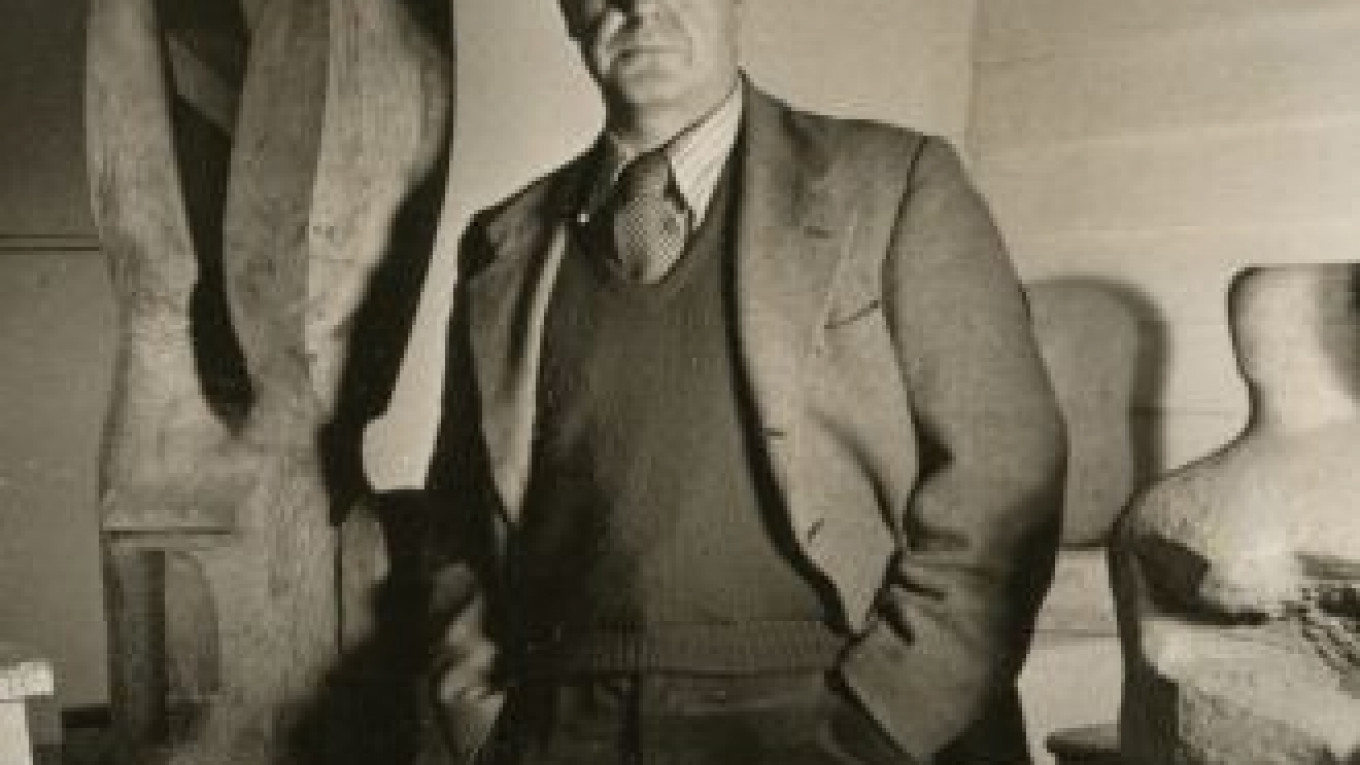There has never been such a contrast of styles in the Kremlin, a modern bronze sculpture from one of the 20th century's great artists placed just in front of a masterpiece of the 17th century.
The sculpture, Henry Moore's "Family Group," depicts a man and a woman sitting on a bench with a small child in their arms, all with Moore's distinctive smooth form and minimal features. It will stand outside Patriarch's Palace for the duration of the Kremlin Museums' latest exhibit of "Henry Moore and the Classical Canon of Modern Sculpture."
The exhibition is the first time the Kremlin has opened its doors to exhibit modern works of art, and Moore is an apt choice, said curator Anita Feldman, who is also the head of collections at the Henry Moore Foundation.
"His work is very accessible because of its roots in nature. He also worked with themes that go right through the history of art, like the reclining figure or mother and child, so there is a connection to the past, but it is done in a very modern way. I think that's a good reason to start with Moore."
Two exhibition halls, one inside Patriarch's Palace and another inside the Assumption Bell Tower, display a selection of sculptures, drawings and tapestries that provide a retrospective look at Moore's lengthy career.
Born in 1898, Moore was the seventh of eight children in a coal-mining family from the rural northeast of England, and the Yorkshire countryside is reflected in much of his work. The area's undulating hills can be seen in the smooth form of his sculptures, and their frequent hollow spaces are attributed to his ventures down local mines.
Moore first studied art at the University of Leeds, where a sculpture department was set up especially for him, before going on to the Royal College of Art in London. It was in London that he acquainted himself with primitive art and sculpture in the British Museum's ethnographic collections. Egyptian, Aztec and Mayan art had a profound impact on his portrayal of the reclining figure, a theme that would come to dominate his career.
In 1928, while teaching at the Royal College of Art, Moore met and fell in love with a Russian student, Irina Radetsky, and they married the following year.
"My mother was very practical and straightforward and gave my father great advice. She was the moon and he was the sun," said the couple's only child Mary Moore in an interview published in a book accompanying the exhibition.
Her parents were united by their survival of profoundly dangerous experiences in their youth, Mary Moore said, her mother surviving the revolution and her father fighting in trenches during World War I.
The exhibit includes several paintings created during World War II. The line drawings depict sleeping bodies curled together in London's Underground during the Blitz, their ridged bodies suggestive of the gas attacks that Moore experienced in the trenches.
Moore and Radetsky lived happily in a timber-framed farmhouse called Hoglands, Moore's home and workshop for the rest of his life.
"They made an ideal couple and complimented each other perfectly. She had an infinite supply of common sense and was able to rein in my father and bring him back down to earth, when that was necessary," Mary Moore said.
It was her birth in 1946 that sparked a wave of creativity, and Moore focused on family groups and mother and child forms like the one now on show in the Kremlin.
Mary Moore's childhood memories are intrinsically connected to her father and his art. In the interview she recalls her seventh birthday party and a game her father organized. "He got the bathroom scales and made all these little girls stand on them, while he guessed their weight. He was accurate to within a pound or two. Obviously it was a game about sculpture, as he spent so much time lifting those pieces of stone."
"Henry Moore and the Classical Canon of Modern Sculpture" runs till May 10th. Kremlin Museums. Metro Alexandrovsky Sad. Tel. 695-37-76.
A Message from The Moscow Times:
Dear readers,
We are facing unprecedented challenges. Russia's Prosecutor General's Office has designated The Moscow Times as an "undesirable" organization, criminalizing our work and putting our staff at risk of prosecution. This follows our earlier unjust labeling as a "foreign agent."
These actions are direct attempts to silence independent journalism in Russia. The authorities claim our work "discredits the decisions of the Russian leadership." We see things differently: we strive to provide accurate, unbiased reporting on Russia.
We, the journalists of The Moscow Times, refuse to be silenced. But to continue our work, we need your help.
Your support, no matter how small, makes a world of difference. If you can, please support us monthly starting from just $2. It's quick to set up, and every contribution makes a significant impact.
By supporting The Moscow Times, you're defending open, independent journalism in the face of repression. Thank you for standing with us.
Remind me later.


